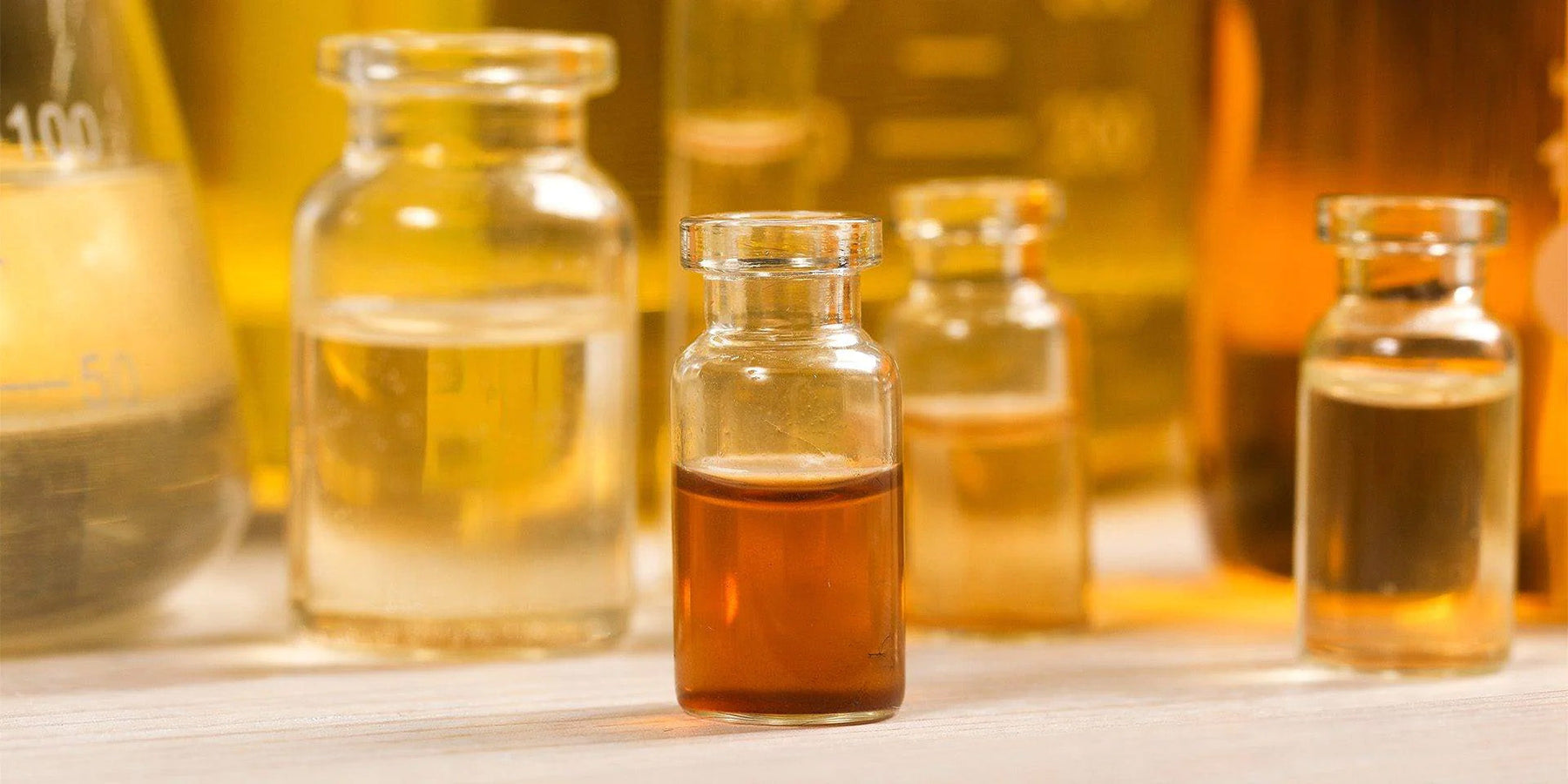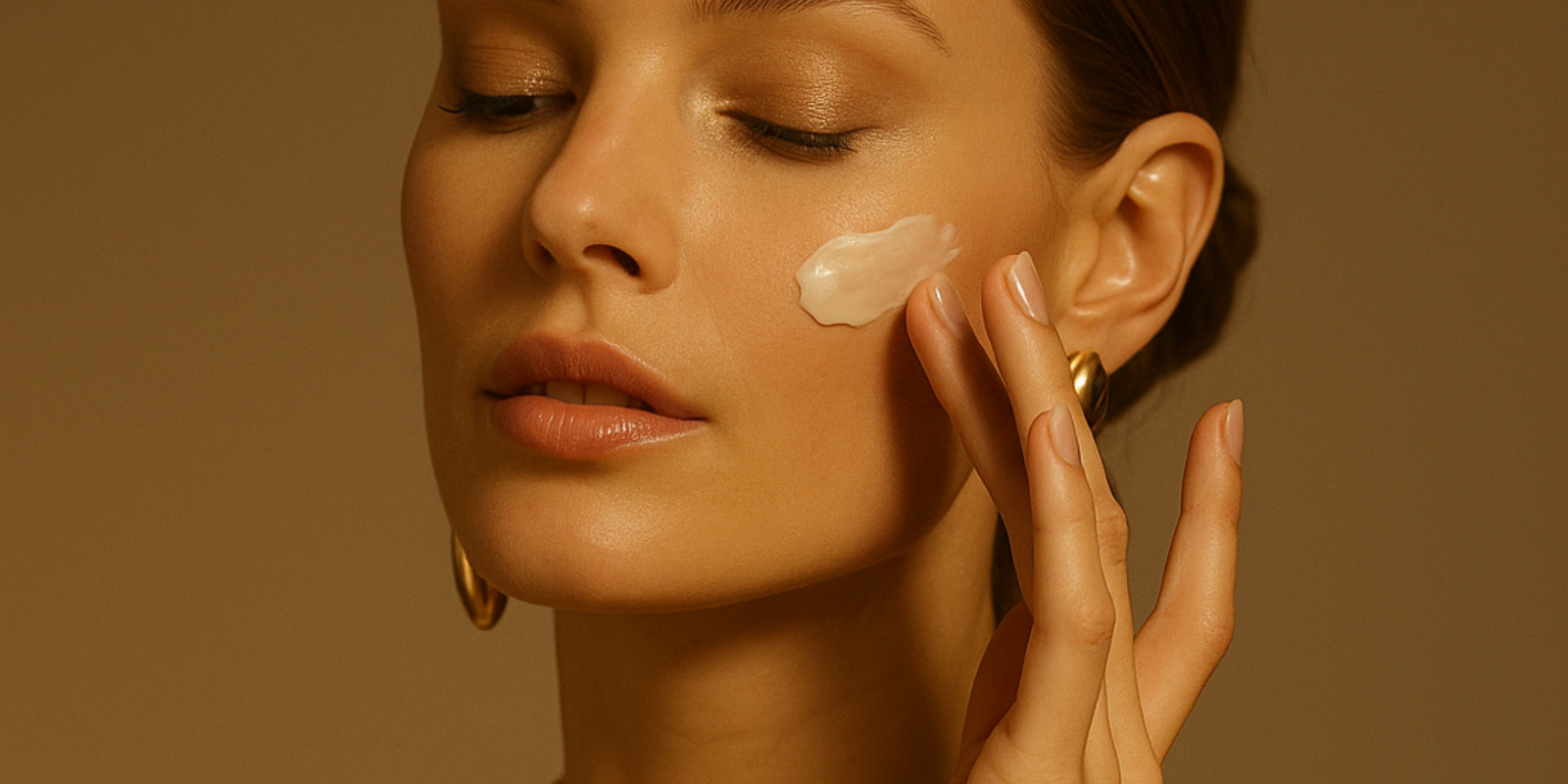EWG Verified & Leaping Bunny Certified | Free Shipping $50+
EWG Verified & Leaping Bunny Certified | Free Shipping $50+
Understanding Essential Oils

Getting to know these potent botanical compounds and how they interact with the skin.
Understanding Essential Oils
What Are Essential Oils?
Essential oils are aromatic compounds pressed or steam distilled from raw plant materials. They are called essential oils because they contain the ‘essence’ of the plant and all of its skin-enhancing properties.
INCI Name
INCI stands for ‘International Nomenclature of Cosmetic Ingredients’ and identifies the species of plant used to make a particular oil. It lists the plant genus (general family) and species (specific member). It is written in italics, with the first letter of the genus capitalized and the first letter of the species lowercase.
Some oils are sourced from multiple species but labeled under one common name. For example, Sandalwood has more than five different species variations, including Santalum album (Indian Sandalwood), Santalum spicatum (Australian Sandalwood), and Santalum paniculatum (Hawaiian Sandalwood), each with different chemical compositions and therapeutic benefits.
How Are Essential Oils Obtained?
Steam Distillation
Steam distillation is the most common technique for extracting essential oils and involves steam passing through the plant material, which is vaporized and then condensed into a liquid.
Solvent Extraction
Solvent extraction is performed using a chemical solvent, such as ethanol and hexane to draw oil from the plant material. After the plant material is treated with the solvent, it produces a waxy compound, which gets mixed with alcohol to release the oil particles.
This method produces what is called an ‘absolute,’ which has exceptional fragrance, however, the solvent chemicals remain in the oil, so absolutes are better used for fragrance rather than skincare.
CO2 Extraction
C02 extraction uses liquified carbon dioxide to force oil from the plant material. The carbon dioxide is liquified under intense pressure. When the extraction is finished, the pressure is released. The carbon dioxide returns to gas, leaving behind the extracted oil. This method results in an oil that most closely resembles its natural state due to heat avoidance.
Farming Methods
When choosing an essential oil, it is vital to be aware of the farming methods used to produce the plants from which the oil is extracted. Essential oils are incredibly concentrated, and trace amounts of pesticides, synthetic fertilizers, or GMOs can remain in the oil. It is best to choose certified organic oils or those labeled as ‘cultivated without chemicals.’
Sustainability
Essential oils are a natural resource, and sustainability is a significant factor when sourcing. Some wild-grown essential oil-bearing crops are the target of overharvesting, such as Rosewood and Spikenard. Cultivated farming of over-harvested crops allows the wild populations to regrow; always choose oils that come from sustainable farming practices that do not disrupt the wild population.
Essential Oil Composition
Essential oils are composed of a wide variety of chemical compounds that are divided into seven general categories: Alcohols (antiseptic/antiviral), Aldehydes (anti-infectious), Esters (anti-fungal), Ketones (stimulate cell regeneration), Phenols (stimulating), Oxides (oxygenating), and Terpenes (detoxifying).
Alcohols
Alcohols are antiseptic, anti-viral, and regarded as non-toxic to the skin. Common sources are Rose, Geranium, and Chamomile oils.
Aldehydes
Aldehydes are anti-infectious but are very reactive on the skin. They are generally found in citrus oils, which are best to avoid in facial skincare products.
Esters
Esters are anti-fungal, calming to the skin, and abundant in Lavender oil.
Ketones
Ketones stimulate cell regeneration, but some forms are known to irritate the skin. Thujone is considered the most caustic ketone and is found in sage and wormwood. Other ketones, such as Jasmone and Fenchone, found in Jasmine and Fennel, are considered non-toxic and safe for use on the skin.
Phenols
Phenols are antibacterial, antiseptic, and incredibly stimulating, but can be very irritating to the skin at high levels. Examples of potent phenols include Clove, Cinnamon, Thyme, and Oregano. Oils with a high phenol content should be avoided in general skincare.
Oxides
Oxides are compounds fused with oxygen molecules and are antiseptic and purifying when diffused in the air. They are better used for that purpose rather than topically in skincare. Common oxides include Eucalyptus and Rosemary.
Terpenes
Terpenes make up the largest group of compounds and are anti-inflammatory, antiseptic, antioxidant, and detoxifying. They are found in various forms in most essential oils, particularly in conifer plants.
How Do Essential Oils Benefit The Skin?
Every essential oil has a unique composition that supports different skin functions; however, they all generally have qualities of cleansing and rejuvenation. Their molecule size is incredibly small, which allows them to penetrate deep into the skin, delivering their healing benefits.
When using essential oils on the skin, it is important to be aware of the chemical composition to choose the oils that will safely treat your skin and avoid those considered irritating.
With two exceptions (Lavender and Tea Tree oils), essential oils should never be applied directly to the skin; they will cause irritation due to their potency. Essential oils should always be diluted in a carrier oil between 1 and 2 percent for topical skincare use.
Photo-Toxicity
Photo-toxicity is an adverse reaction that occurs in the skin when a substance is applied and exposed to UV light (daylight). Certain essential oils contain a compound called Furanocoumarin, which is highly photo-toxic and causes redness, hyperpigmentation, and inflammation in the skin.
Furanocoumarin is considered a photo-carcinogen, and should be avoided in skincare. Oils that contain Furanocoumarin include Bergamot, Lemon, Lime, Grapefruit, Bitter Orange, Mandarin Leaf, and Angelica Root.
Flora Mirabilis Essential Oils
We use five essential oils in our Flora Mirabilis FACE OIL formula; Sandalwood, Frankincense, Lavender, Rose, and Oud. These oils are particularly beneficial for treating the skin. They are anti-inflammatory, antiseptic, detoxifying, and promote cell regeneration, giving skin a clear, healthy, revitalized appearance.
Sandalwood Oil
We use sustainably and ethically sourced Santalum album (Indian Sandalwood). This is the best species for skincare as it contains the highest levels of Santalol- a terpene compound responsible for clarifying and brightening skin.
Frankincense Oil
Frankincense is another oil that comes from a variety of species. We use Boswellia serrata, Indian Frankincense, the species that contains the highest levels of the terpene Boswellic acid, which helps even out pigmentation.
Lavender Oil
Our Lavender comes from a unique source- the flowers are grown at a high altitude, which changes the oil composition slightly from standard Lavender oil. The high altitude grow produces lower levels of camphor, a regenerating ketone, which makes it incredibly gentle and soothing to the skin.
Rose Oil
Because it is much less expensive, many products contain Rose absolute instead of Rose essential oil. However, these two ingredients are not interchangeable. We use true Rose essential oil, steam distilled from Damask rose petals in our formula to ensure its safety on the skin. Our Rose oil contained a mild phenol called Eugenol that has a gentle, astringent-like effect on the skin, which helps to minimize the appearance of pores.
Oud
Our Oud is steam distilled from the resin of sustainably sourced Agarwood trees. This rich, resinous oil contains many antioxidant-rich terpenes which work to purify the skin.
Also in Apotheca Edit

The Dangers of Designer Skincare
The price tag of luxury skincare doesn’t mean rare ingredients and better results. Many designer formulas prioritize packaging gimmicks and prestige over true skin health—often using silicones, synthetics, and preservatives that quietly damage your skin barrier. Learn about label transparency and why “premium” isn’t always better to reveal what skin nourishment really looks like.

The Top 10 Best (And Worst) Oils to Use On Your Face
I get asked all the time about using oils like avocado, olive, and coconut on the face—and the truth may surprise you. Not every “natural” oil is good for your skin. In this post, I break down the best and worst oils to use, what their comedogenic ratings really mean, and how to choose the ones that will actually nourish your skin instead of clogging it.

The Truth About Coconut Oil in Skincare: Why I Never Use It on the Face
While coconut oil does have benefits for skin and hair, its fatty acid profile makes it a less-than-ideal choice for facial skincare. If your goal is clear, youthful, and radiant skin, there are far better options.
Subscribe
Sign up to get the latest on sales, new releases and more …
Reviews
See why 1000's have simplified their skincare with Flora Mirabilis.
